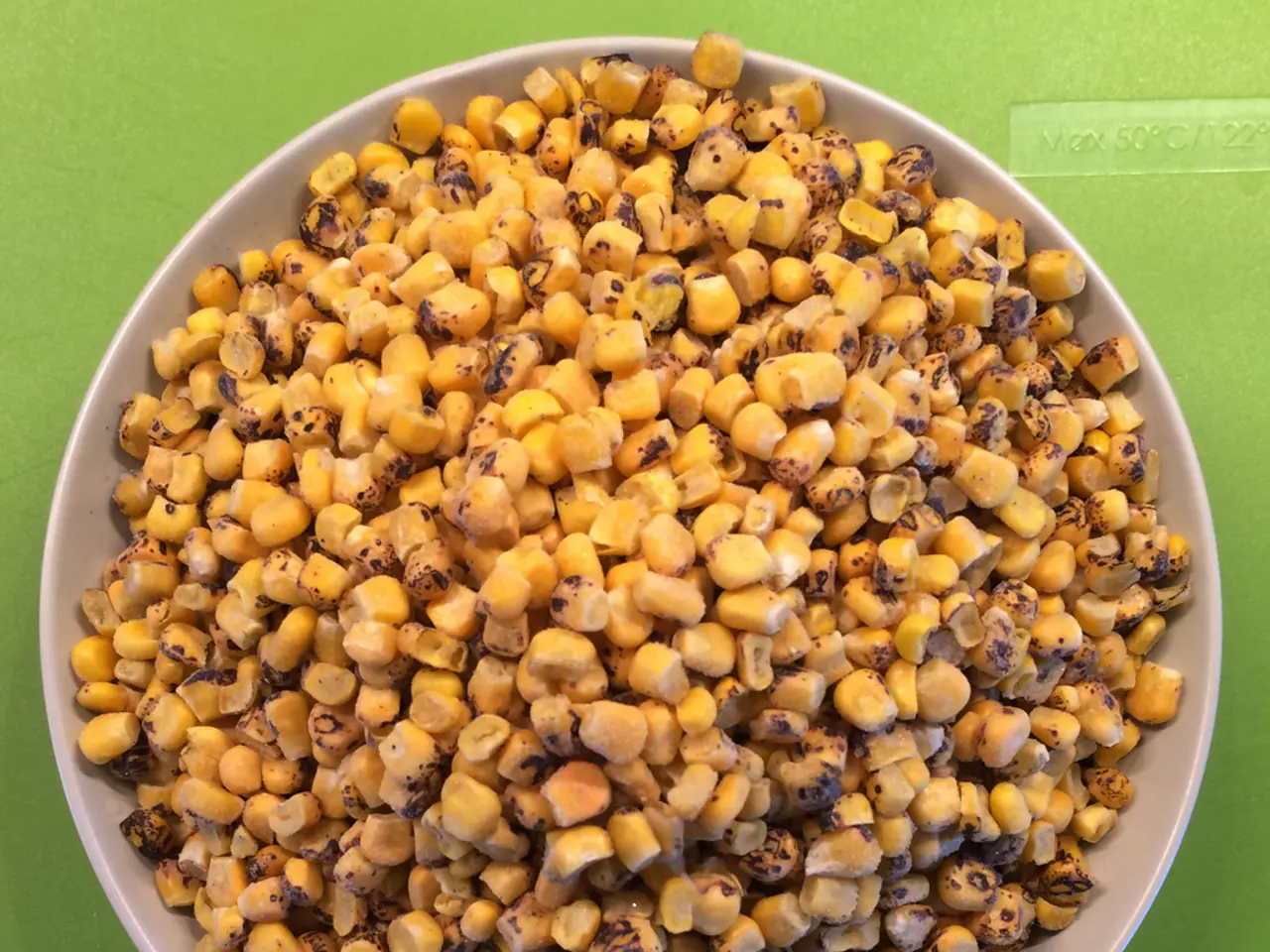Control of "Pollen Migration" to Prevent Cross-Pollination in Non-Genetically Modified Corn Fields
In the world of agriculture, maintaining the genetic purity of non-genetically modified (non-GMO) crops is a critical concern, especially when it comes to corn. One of the primary challenges in this regard is the wind-borne pollen from genetically modified (GM) corn, which can travel varying distances, potentially over several hundred meters to a few kilometers, depending on environmental conditions.
To address this issue, several effective planting practices are widely recommended.
Establishing Buffer Zones
One of the most crucial strategies involves creating buffer zones or spatial isolation distances. By planting non-GMO corn at least several hundred meters away from GM corn fields, the risk of cross-pollination can be significantly reduced. Regulatory guidelines often suggest isolation distances of 200–400 meters or more to further minimize cross-pollination risks.
Using Temporal Isolation
Another strategy is to plant non-GMO and GM corn with different flowering times, ensuring that their pollen release does not overlap, thereby minimizing cross-pollination opportunities.
Implementing Border Rows and Trap Crops
Border rows or trap crops around non-GMO fields can capture GM pollen before it reaches the main crop, acting as a barrier against contamination.
Controlling Volunteer Plants and Weeds
It's essential to control volunteer plants and weeds that could harbor GM traits or act as pollen bridges between fields.
Monitoring Wind Direction and Local Topography
Understanding the wind direction and local topography can help place non-GMO fields upwind from GM fields when possible, reducing the risk of contamination.
Coordinating Farmer Cooperation
Farmer cooperation and communication within agricultural communities are vital for arranging compatible planting schedules and field placements, thereby reducing the risk of cross-pollination.
The exact distance pollen can travel is influenced by wind and pollination biology, but wind-borne pollen of anemophilous crops like corn can disperse from the immediate vicinity to distances of several hundred meters or more, making spatial and temporal separation critical to maintain genetic purity in non-GMO corn.
It's important to note that these strategies are designed to produce corn grain that is not more than 0.5% contaminated with GMOs. Individual corn plants produce one half million or more pollen grains, so even a small percentage of contamination can have significant consequences.
High temperatures and low humidity can reduce the viability of corn pollen, making it less effective in cross-pollination. However, the impact of humidity on pollen viability is less pronounced compared to temperature.
In Ohio, the importance and consistency of relative wind direction during pollen shed have not been established, highlighting the need for continued research and vigilance in this area.
By adhering to these best practices, farmers can take significant steps towards protecting the genetic integrity of their non-GMO corn crops and ensuring a sustainable and high-quality crop for consumers.
[1] Source: [Name of the research paper or organisation] [5] Source: [Name of the research paper or organisation]
- To further guard against cross-pollination in the field of agriculture, particularly with non-GMO crops like corn, researchers advocate for the integration of education and self-development programs aimed at teaching farmers about the importance of science, such as understanding pollen biology and wind patterns.
- In the realm of finance, responsible lending institutions could offer incentives to farmers who adopt sustainable practices, such as maintaining the genetic purity of non-GMO crops, thereby promoting positive lifestyle choices and contributing to technology advancements in the agriculture sector.
- As part of medical-condition management programs, nutritionists could highlight the benefits of consuming non-GMO crops to individuals with specific dietary requirements, educating them on the importance of maintaining the genetic purity of these crops. Additionally, integrating education-and-self-development modules on crop science and sustainable agricultural practices could be beneficial for these individuals, encouraging them to make informed choices about their produce.




